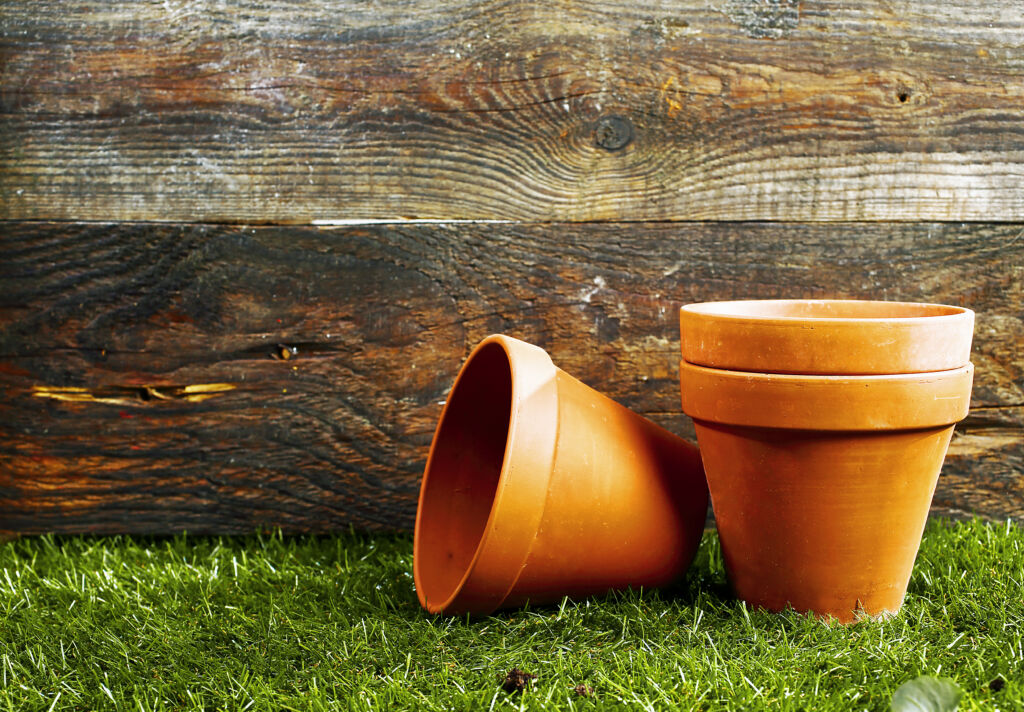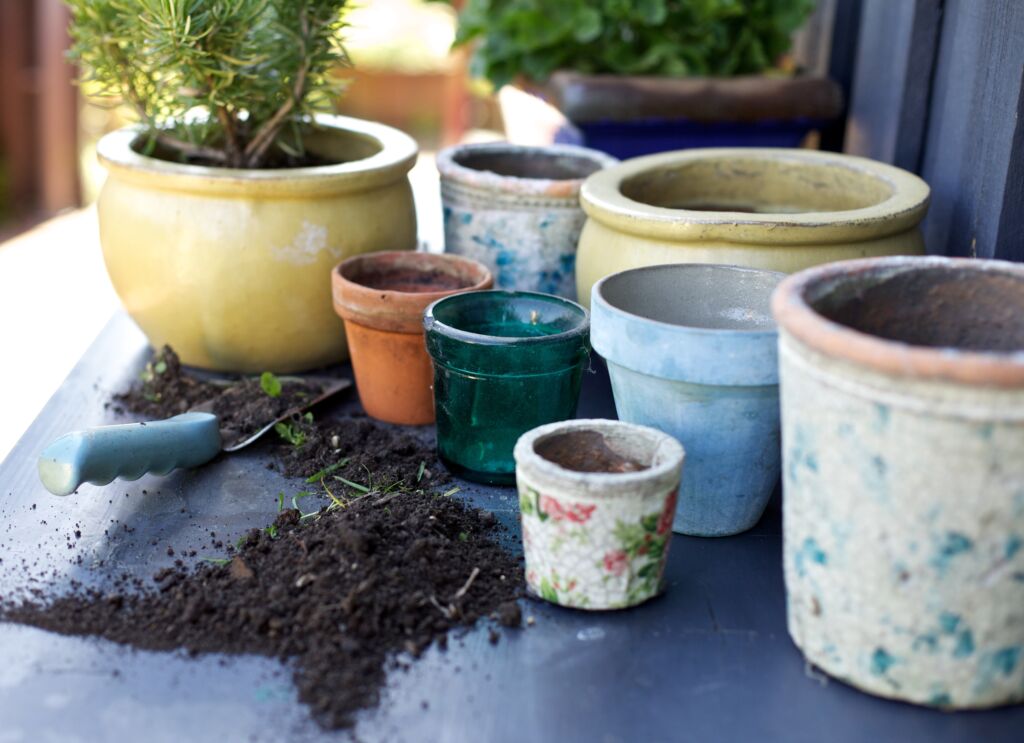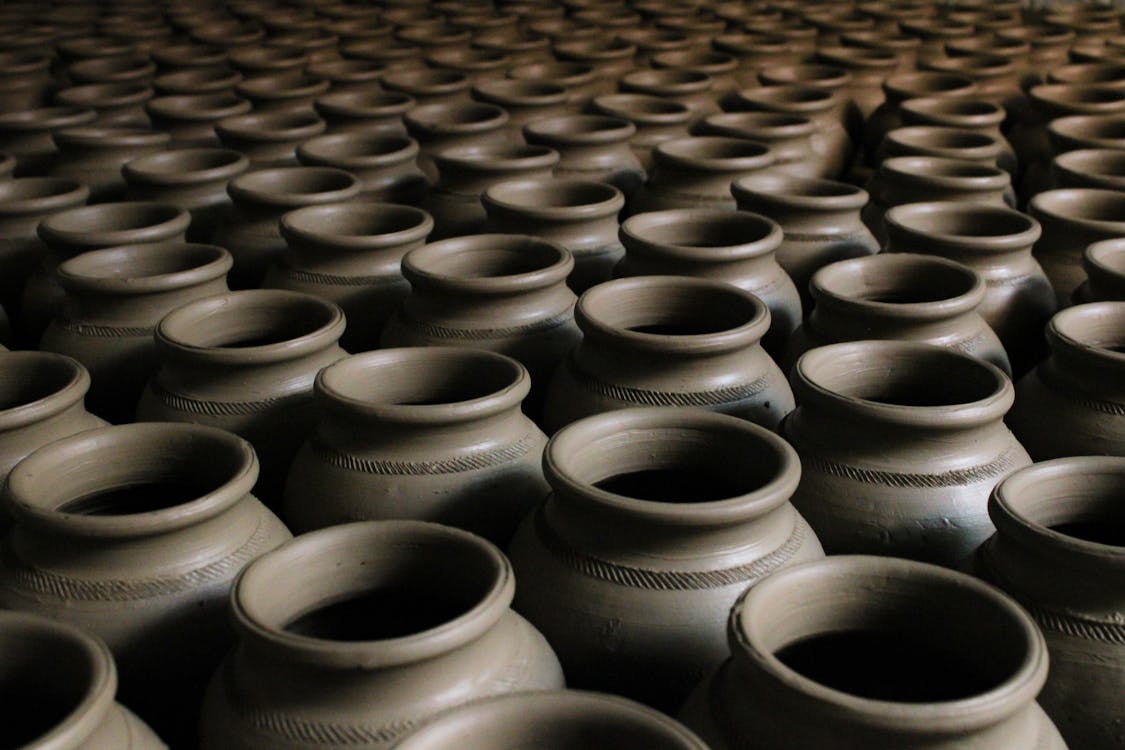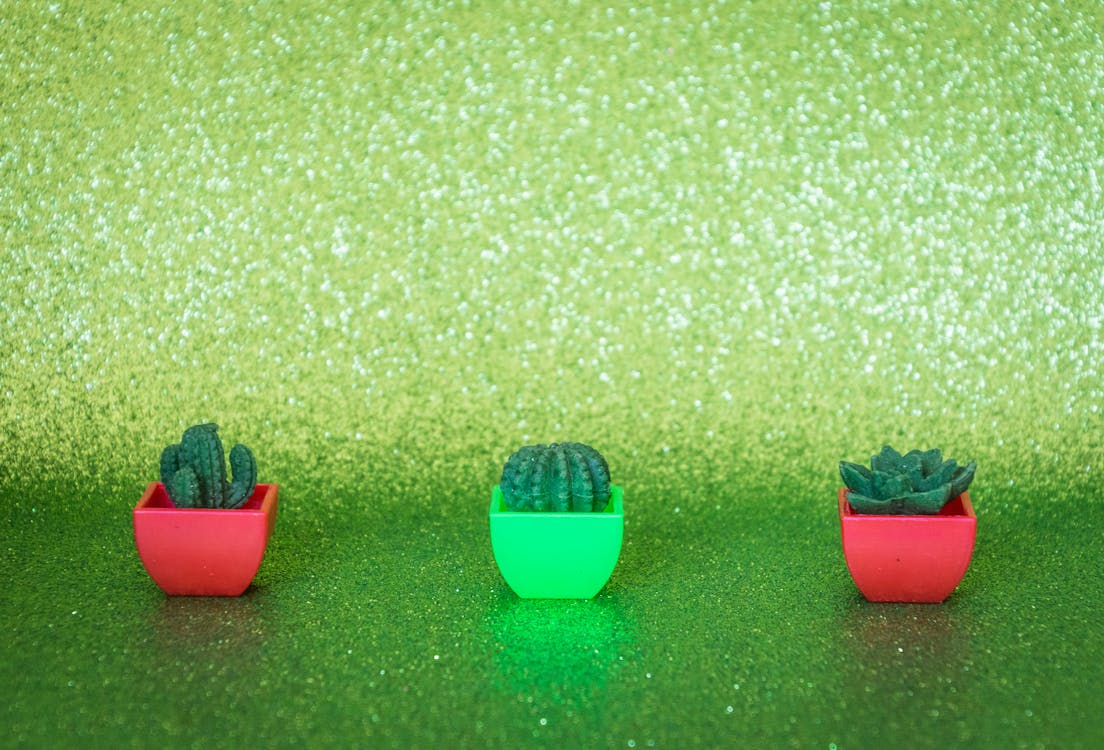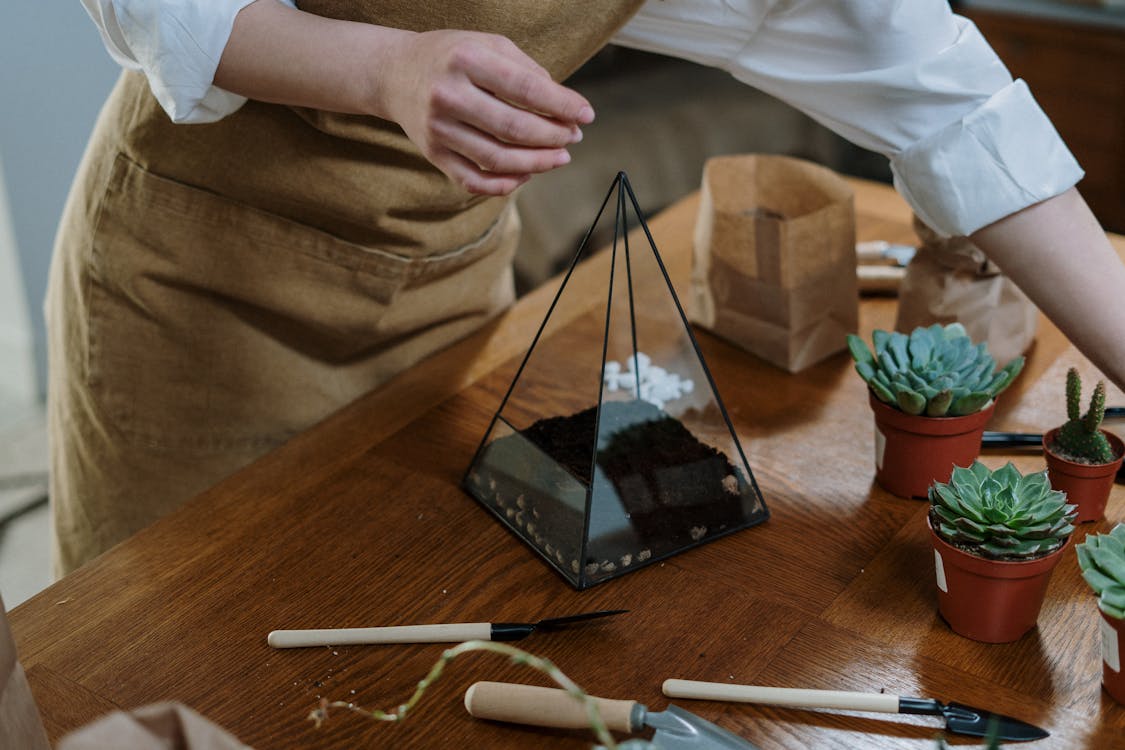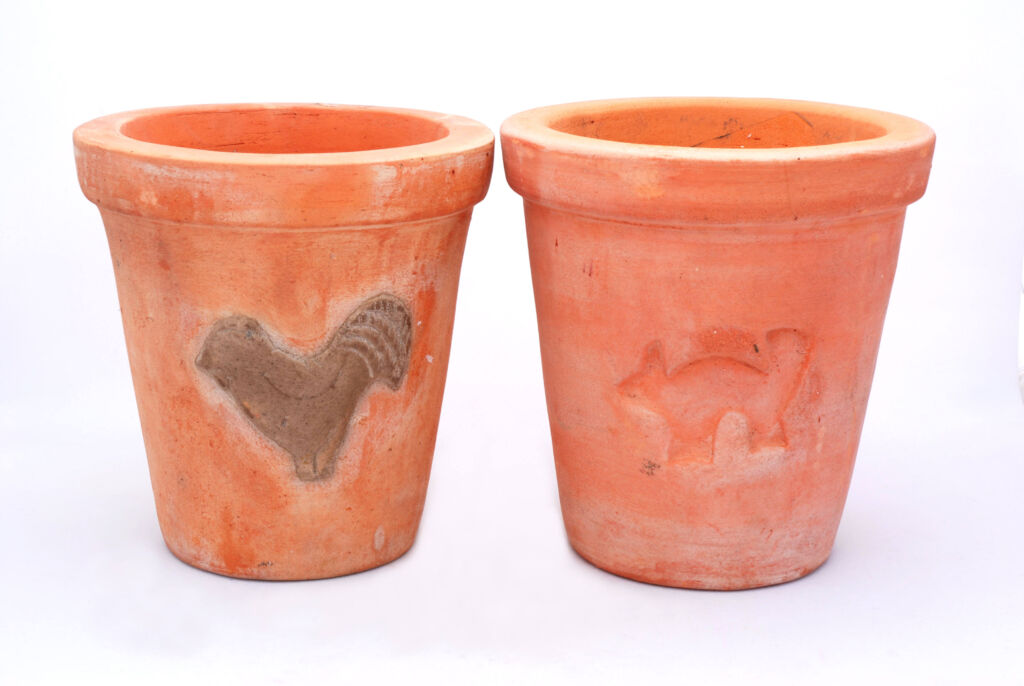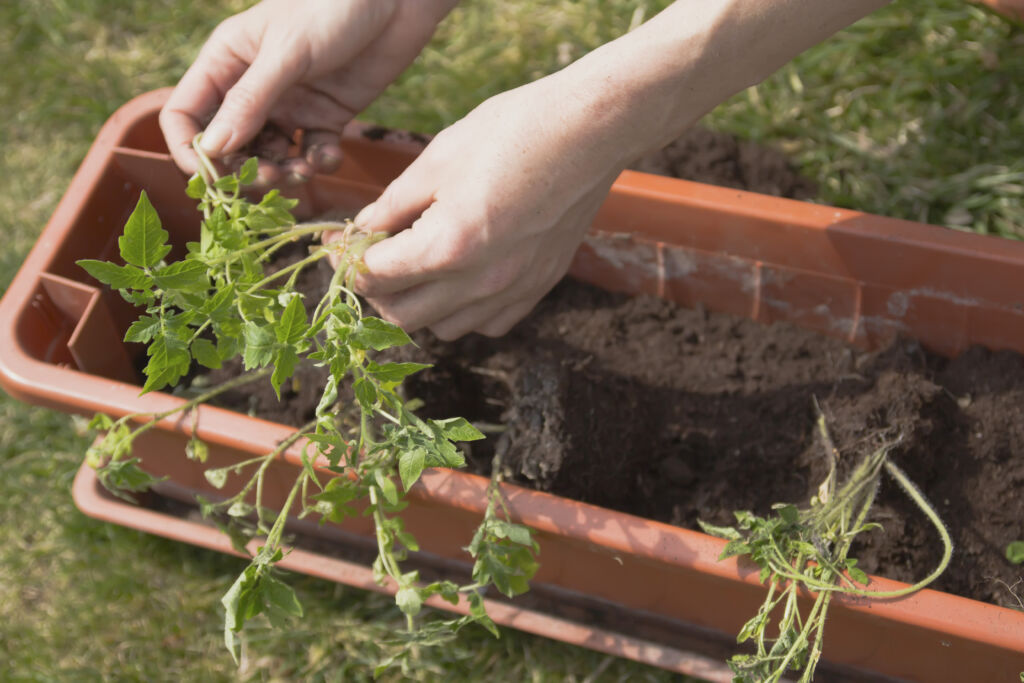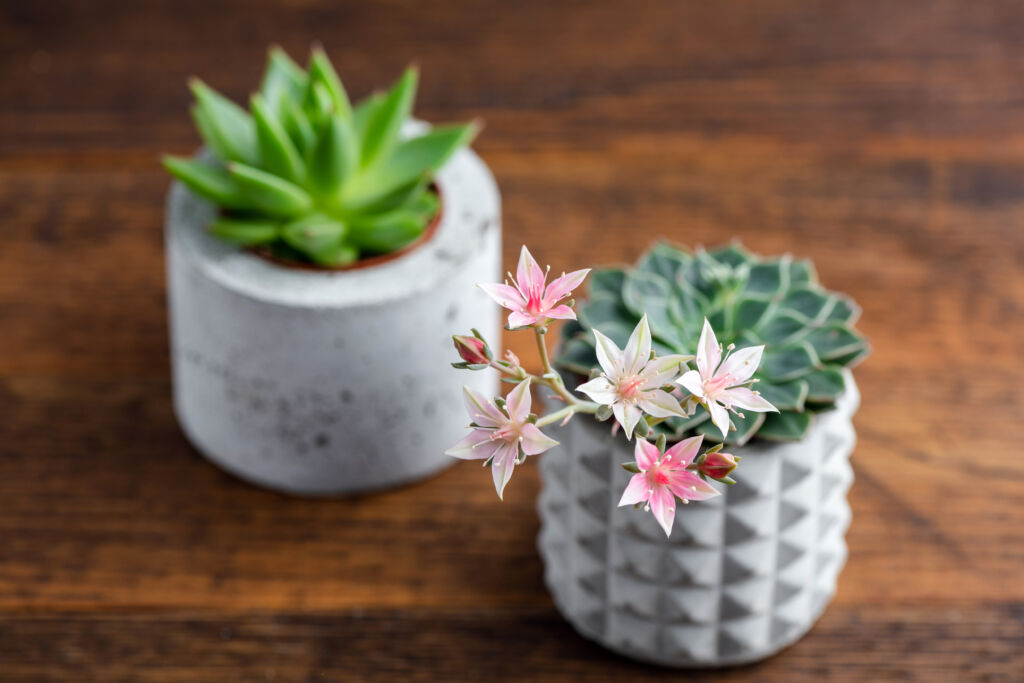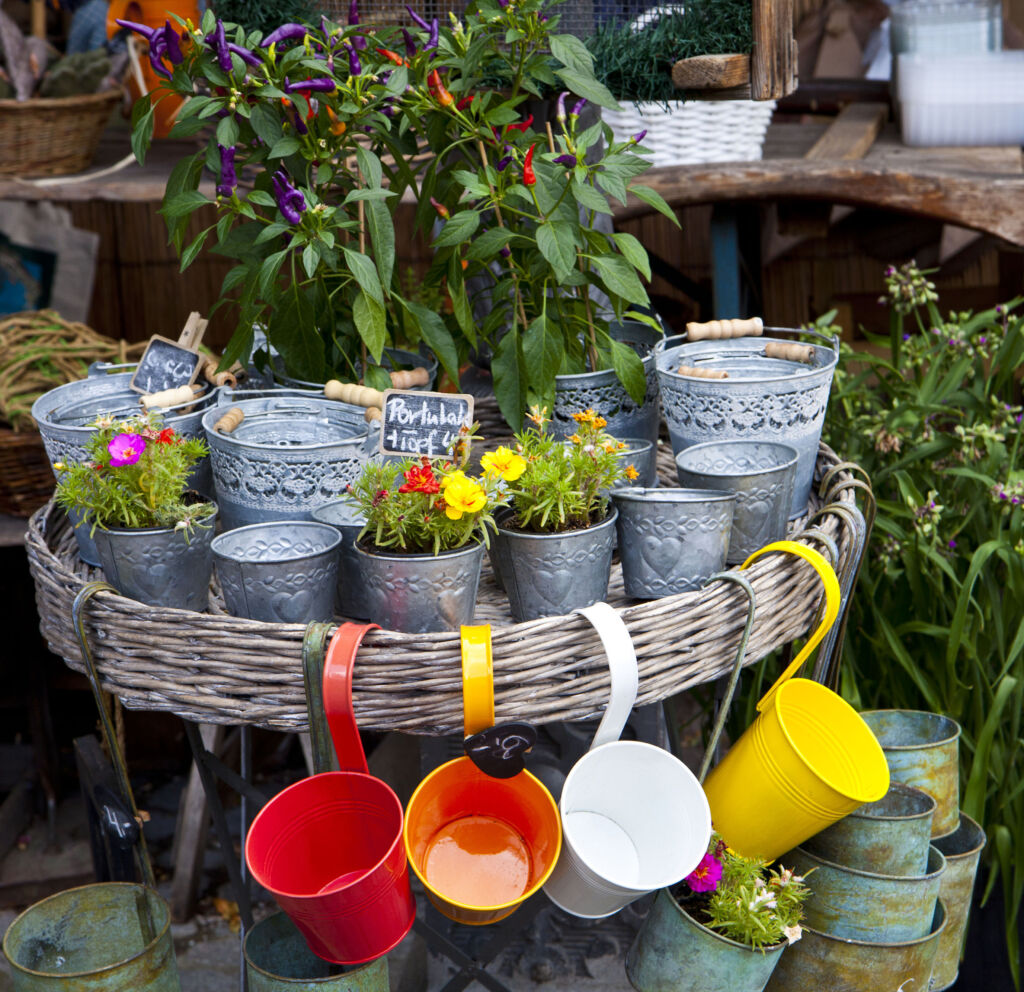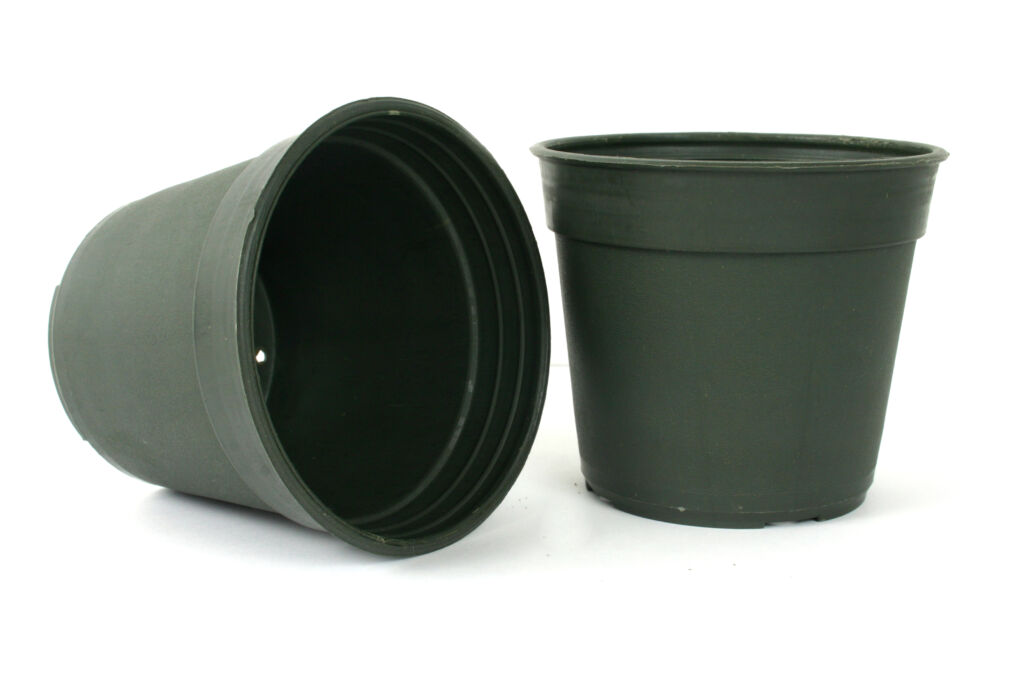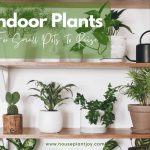HousePlantJoy is supported by our audience. When you purchase through one of our links, we may earn a small affiliate commission. As an Amazon Associate I earn from qualifying purchases. Your cost is not affected.
==================
Know the secret of what type of plant pots are beneficial for your plants.
Walk into a garden center, and you will see a variety of garden pots. Big plastic pots, colorful pots, resin pots, decorate ceramic pots, clay, and stone pots. So, which should you buy? Is your choice solely based on aesthetics, or do you want a pot beneficial for your plants?
There are several materials used for making different types of plant pots. Some typical choices include Clay, Plastic, Glass, Terracotta, Resin, Soil, Concrete, Metal, and Foam. Each of these materials has its own advantages and disadvantages.
More to consider than material
In addition to pot material, the size of your pot is also essential because it will determine how much room your plant has to grow. If you plan to start with a small plant, you should consider getting a smaller pot. This way, your plant can expand its root system for better access to water and nutrients. However, if you plan on having a larger plant, you may want to go with a larger pot that offers more room for your plant and its roots.
Moreover, when choosing a pot, considering other factors like compost filling and drainage system is also vital. Below, we will explain different types of plant pots along with the pros and cons, so you don’t end up with a pot full of water that doesn’t drain properly.
Different Types of Plant Pots
1. Clay Pots
The best pot for different types of plants that thrive in drier soil.
Among other different types of plant pots, clay pots are more common. These plant pots are widely used in indoor cultivation because they retain moisture and reduce evaporation. Clay pots are porous and let air flow through them, allowing the roots to breathe freely. This helps prevent root rot, which can occur if the roots cannot get enough oxygen. Clay pots are also great for beginners who want to care for their plants properly.
Additionally, among other different types of plant pots, a clay pot is more efficient in removing excess moisture from the soil. The clay pot is harmonious with most flowers and foliage colors due to its rusty brown color.
Different Types of Plants for Clay Pots
- Succulents
- Cacti
- Aloe Vera
- Peperomia species
- Syngoniumspecies
- Opuntia Cactus
- String of Hearts
- String of Pearls
Pros
- Clay plant pots are eco-friendly and biodegradable
- They provide a healthy growing environment.
- These pots improve air circulation, which helps your plant form healthy roots.
- Clay pots are easy to clean. You don’t need any special equipment to clean them. Just use water and soap.
- Clay pots allow excess heat to radiate away from the roots, keeping them cooler compared to other materials.
Cons
- Unlike metal or plastic pots, clay pots are prone to break easily.
- It is hard to drill a hole for drainage in a clay pot without breaking it.
- Your plants will need more frequent watering.
- Clay plant pots are also susceptible to cracks from thaw cycles.
2. Plastic Pots
Best for different types of plants that prefer heat
The second most used type of plant pot is the plastic pot. They are popular among hobbyists and farmers alike. These pots are inexpensive and easy to clean. However, they may not be an appropriate option for some plants due to their ability to retain heat.
Unlike metal or clay pots, plastic plant pots are strong, flexible, and lightweight. You can easily find these pots for different plants because they come in many colors, coordinating with interior and exterior decor. Moreover, plastic plant pots are also an excellent option for moisture-loving plants because they don’t have the wicking feature.
Different Types of Plants for Plastic Pots
- Lantana
- Cosmos
- Geranium
- Sedum
- Salvia
- Lemon Verbena
- Marigold
Pros
- Plastic pots are easy to clean and maintain.
- They don’t retain much water, making them perfect for plants susceptible to root rot.
- If you’re looking for something that will stand up to extreme weather conditions while giving your plants plenty of room to breathe, then look no further than plastic pots.
- Plastic pots are lightweight, easy to use, and cost-effective.
- Plastic pots are durable and won’t break down over time like clay pots.
- Plastic pots weigh almost nothing compared to normal pots, which means less strain on your back and arms.
- Most plastic pots are UV resistant, so they won’t crack or peel after extended exposure to harsh environmental elements.
- Unlike clay pots, plastic pots won’t break apart when you’re handling them. Even if you drop them from a height, they won’t shatter.
Cons
- Leaving them in direct sunlight for too long can attract and store heat, leading to premature wilting.
- They are prone to fading in direct sunlight.
- There are health concerns related to the use of cheap quality plastic.
- They are not good for growing edible plants like veggies or fruits.
3. Glass Pots
Best for herbs and plants that need oxygen when flowering
Growing different plants in glass plant pots is a hot new trend. They are one of the most aesthetic types of plant pots that you can use to grow herbs, veggies, and houseplants. They are easier to clean and can be used indoors or outdoors. However, glass pots are expensive compared to other types of plant pots, and a good quality glass pot can cost up to $200.
Moreover, washing a glass pot with soap can ruin its seal. The best way to wash and clean your glass pots is to use lukewarm water diluted with dishwashing liquid. The biggest advantage of using glass, among other types of plant pots, is that you can see the roots as they shoot.
Different Types of Plants for Glass Pots
- Herbs
- English Ivy
- House Holly Fern
- Wandering Jew
- Aloe Vera
- Cactus
- Watch Chain Plant
- Pothos
Pros
- Glass pots are great for hydroponic cultivation.
- They provide a clean environment for your plants and allow maximum light penetration, making them ideal for different types of plants that need a lot of light.
- You can use them in conjunction with other cultivation methods, such as aeroponics.
- Glass pots allow light to penetrate deeper into the root zone.
- Glass pots have a smooth surface making them easier to clean.
- Glass pots are lightweight, durable, long-lasting, and easy to transport.
- Glass pots have a large surface area, allowing the roots to breathe better than plastic pots. This is especially helpful for different types of plants that need oxygen while flowering.
- They are weather resistant.
Cons
- Good quality glass pots can be expensive.
- They can easily crack if dropped.
- Not a good insulator for both hot and cold.
4. Terracotta Pots
Best for Plants that Prefer a Dry Soil before Watering
Terracotta pots are ideal for those who like to grow plants outdoors. Terracotta pots are usually made from clay but can also be made from other materials like wood, stone, or plastic. They are heavy-duty and durable, making them perfect for outdoor use. These types of plant pots are also resistant to extreme weather conditions.
These reddish-brown plant pots are incredibly popular planting containers. Traditional terracotta pots can also be a great option for growing plants. They tend to be made of less porous, denser earthen materials and are often glazed from both inside and outside.
Different Types of Plants for Terracotta Pots
- Succulents
- Cacti
- Orchids
- Hoyas
- Bromeliads
- Sansevierias
- Peperomias
Pros
- You can use these pots for different types of plants.
- Terracotta pots provide a stable environment for your plant because of their heavy weight.
- These pots can efficiently regulate temperature by keeping heat away from the roots and allowing air circulation around the leaves.
- They don’t have any drainage holes, which means less waste of water and less time cleaning out your pot.
- These pots also come in different shapes and sizes, allowing you to choose what size pot works best for your plants easily.
- Terracotta pots are durable. They do not crack easily and are resistant to heat.
- They can withstand temperatures from -40 degrees Fahrenheit to over 1000 degrees Fahrenheit.
Cons
- They are heavy and put more strain on your arms and back when you want to move them around.
- They can easily break if dropped due to their brittle nature.
- A terracotta pot not sealed from the inside will dry out quickly.
5. Resin Pots
Best for Plants that Prefer Proper Air Circulation
Resin pots are another type of plant pot that you can have to keep your plants healthy and happy. These pots are great for indoor and outdoor cultivation, depending on the resin pot you choose. You can use these pots for different types of plants. Some people use them to help their plants stay warm, while others use them to help keep their plants cool.
Real resin is made from a special composite blend that isn’t plastic. These pots are made from low-density polyethylene. Resin pots are lightweight, and you can make them look like different materials by spending only a fraction of the cost.
Different Types of Plants for Resin Pots
- Fruits
- Veggies
- Devil’s Ivy
- Philodendron
- Rubber Plant
- Boston Fern
Pros
- They provide a good environment for your plants, helping them thrive.
- You can use resin pots for both indoor and outdoor cultivation.
- Resin Pots allow better air circulation and humidity control than many other different types of plant pots.
- These pots are a go-to for beginners.
- They are durable, cost-efficient, and easy to clean.
Cons
- Resin pots are heavy and can strain your arms and back more when you want to relocate your plants.
- They are porous and susceptible to stains.
- These pots are not weather-resistant.
- They are dense and inflexible, making them not withstand longer.
6. Self-Watering Pots
Best for Plants that Prefer Plenty of Water
Watering pots are often neglected and left unattended. This can lead to several problems that may not become apparent until much later. If your potting mix has dried out, water loss through evaporation could cause your plants to dehydrate. In addition, if your potting mix has been allowed to dry out too long, it will no longer hold moisture and start to collapse.
Crumbling potting mixes can result in root rot, which will eventually kill your plants. Self-watering pots are a type of plant pots that hobbyists and gardeners use to grow plants. These types of plant pots are generally made of plastic, having a reservoir at the base to store water.
These pots use irrigation and a reservoir to deliver water directly to your plant’s roots. This system helps your plant get water at its own pace while showing the caregiver when it is time to water again with an empty reservoir. You can use these pots for different types of plants.
Different Types of Plants for Self-Watering Pots
- African Violets
- Fiber Optic Plant
- Peace Lilies
- Devil’s Ivy
- Ferns
- Pitcher Plants
- Umbrella Palm
Pros
- Watering pots are great for indoor gardening.
- They can save a lot of water.
- They have an irrigation system for consistent water to your plants at regular intervals.
- These pots are perfect for keeping the roots moisturized.
- Self-watering pots preserve the nutrients in the soil.
- These pots allow you to control the environment around your plants and keep them safe from outside elements that can cause harm.
- With self-watering pots, you can use water to fertilize your plants. This method is much better than using fertilizer directly on the leaves.
Cons
- Plants that require very moist soil may struggle with the self-watering system.
- These pots cannot properly soak thirsty aquatic plants like a fiber-optic plant.
- They are not a good choice for humid or wet environments.
- They are pricier than many other types of plant pots on the market.
7. Concrete Pots
You can use concrete pots for different types of plants, both indoors and outdoors. They are easy to use, cost-effective, and can hold a large amount of water for plants that need frequent watering. Concrete pots come in many different sizes, shapes, and colors.
Some have drainage holes, while others don’t. Concrete pots with drain holes help drain water for plants that don’t like to stand in soggy soil. Pots with no drain holes are perfect for plants that love to swim in the water.
Pros
- Concrete Pots provide a stable environment for your plants that can withstand extreme temperatures and humidity fluctuations.
- They are durable, easy to clean, and can withstand high temperatures.
- You can reuse these pots over and over again.
- They are inexpensive.
Cons
- Concrete pots contain lime which mixes into the soil when wet, creating a high pH that can harm certain plants.
- Cement also causes efflorescence that can damage your plants.
- Since these pots are porous, they can cause underwatering, leaving your plants thirsty.
- These pots are heavy, especially when the soil is added.
8. Metal pots
Best for Soil-Based Setups
Metal plant pots are one of the most durable pots that you can have. They come in an array of metals, including aluminum, galvanized steel, and cast iron. While these pots are hard to break or crack, thin materials are susceptible to dent. Moreover, a pot made of cheaper metal is prone to rust quickly.
You can have these plant pots for different types of plants. They are also an excellent option for hydroponic systems and soil-based setups. Additionally, metal pots are great if you have access to a greenhouse or indoor garden area. If you live in a cold climate, you may need to cover your pot with a plastic bag before placing it outside.
Different Types of Plants for Metal Pots
- Hosta
- Hebe
- Agapanthus
- Skimmia Japonica
- Euonymus
- Pittosporum Tenuifolium
- Fountain Grass
Pros
- Metal pots are great for indoor cultivation.
- These pots are easy to clean and maintain.
- Metal pots come in many sizes and shapes, from small planters to large troughs.
- They are also available with a built-in reservoir system, making it easy to water your plants without having to worry about leaks.
Cons
- If you live in hot climates, using metal plant pots isn’t a good idea.
- They aren’t a good choice for the outdoors.
- Metal pots attract heat, causing damage to the plant roots.
- Fertilizers with salts can damage metal finishes.
- They are heavy.
So many different types of plant pots to choose from
There are a plethora of different types of plant pots used for indoor and outdoor gardens. Above, I have explained some most popular types of plant pots along with their pros and cons. Gardening enthusiasts use these plant pots for different types of plants. They come in different shapes, sizes, and styles. I hope this post will help you find the right pot for your plants.
FAQs
What types of plant pots are best for plants?
Plant pots, such as clay pots and terracotta pots, are good options for many reasons. You can use these pots for different types of plants.
What are the most popular types of plant pots?
Glass pots, clay pots, and metal pots are popular among hobbyists and gardeners for cultivating different types of plants.

